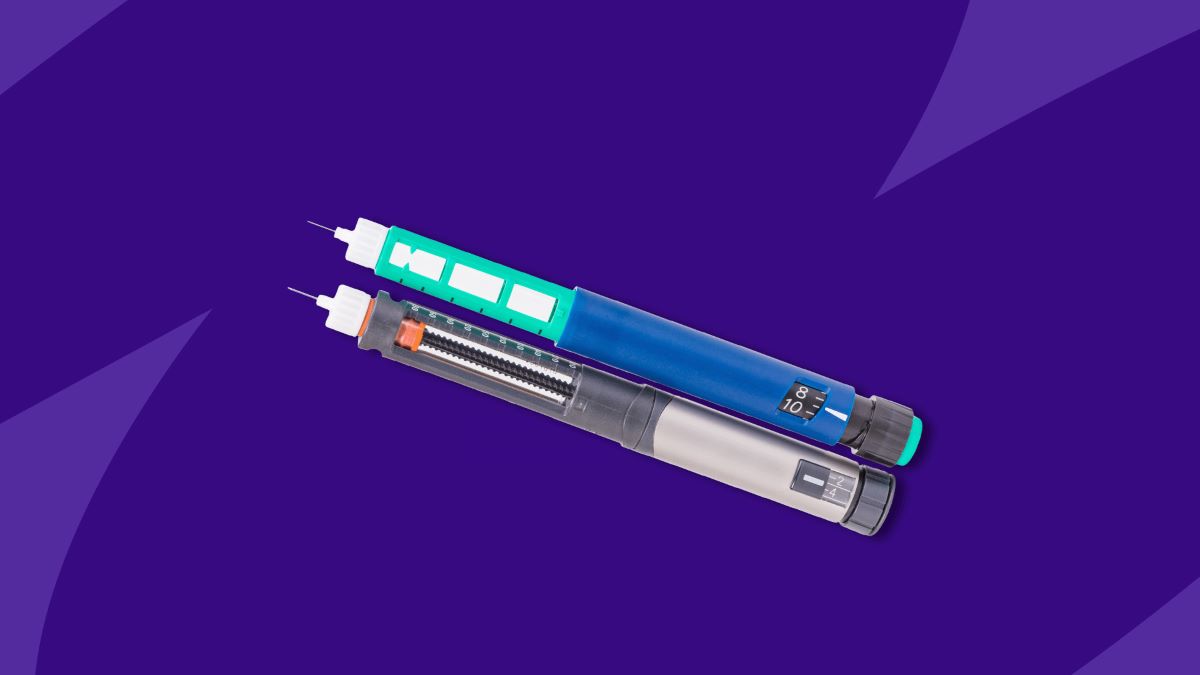

Finance
How To Get TMJ Botox Covered By Insurance
Published: November 12, 2023
Learn how to get TMJ Botox covered by insurance and save on your treatment costs. Finance your TMJ treatment with insurance coverage.
(Many of the links in this article redirect to a specific reviewed product. Your purchase of these products through affiliate links helps to generate commission for LiveWell, at no extra cost. Learn more)
Table of Contents
Introduction
Temporomandibular joint disorder (TMJ) affects millions of people worldwide, causing discomfort, pain, and a range of symptoms that can significantly impact daily life. Fortunately, Botox has emerged as a successful treatment option for TMJ, providing relief for those suffering from this condition.
TMJ refers to a group of disorders affecting the temporomandibular joint, which connects your jawbone to your skull. Common symptoms of TMJ include jaw pain, headaches, earaches, clicking or popping sounds when opening the mouth, and difficulty chewing or speaking comfortably.
Many individuals with TMJ find that traditional treatments like oral splints, physical therapy, and pain medication only provide temporary relief. In recent years, however, Botox has garnered attention as a viable alternative treatment option for TMJ.
Botox, a neurotoxin derived from the bacterium Clostridium botulinum, is commonly known for its cosmetic applications. However, it has also been found to be effective in treating various medical conditions, including TMJ.
By injecting Botox into the muscles surrounding the jaw joint, it helps to relax and relieve tension in the area. This can alleviate symptoms such as jaw pain, lockjaw, and muscle spasms, providing much-needed relief for those suffering from TMJ.
While Botox treatment for TMJ has gained popularity for its effectiveness, many individuals may be hesitant to pursue this option due to concerns about insurance coverage and potential costs. In the following sections, we will explore the benefits of TMJ Botox treatment, insurance coverage options, and some tips for successfully getting TMJ Botox covered by insurance.
Understanding TMJ and Botox Treatment
Before diving into the details of how Botox can help with TMJ, it’s important to have a clear understanding of the condition itself. Temporomandibular joint disorder, or TMJ, is a condition that affects the jaw joint and surrounding muscles. It can result from various factors, including jaw injury, stress, teeth grinding, malocclusion, or arthritis.
TMJ can cause a range of symptoms, including jaw pain and stiffness, clicking or popping sounds when opening or closing the mouth, difficulty in fully opening the mouth, headaches, earaches, and even neck and shoulder pain.
However, Botox has emerged as a promising non-surgical treatment option for TMJ. Botox, made from a purified form of botulinum toxin, works by temporarily paralyzing or weakening muscles. When injected into the muscles around the jaw joint, Botox can relax the muscles, reduce muscle spasms, and alleviate TMJ symptoms.
The Botox injections are typically delivered directly into the specific areas of the jaw muscle that are causing discomfort and pain. The procedure itself is relatively quick and minimally invasive, with patients experiencing little to no downtime.
The effects of Botox treatment for TMJ can last anywhere from three to six months, depending on the individual. Many patients report significant improvement in their symptoms, including reduced jaw pain, increased jaw mobility, and relief from headaches and muscle tension.
It’s important to note that Botox treatment for TMJ is a complementary approach to traditional TMJ treatments. It is often used in conjunction with other therapies such as physical therapy, stress management techniques, and the use of oral splints.
It’s important to consult with a qualified healthcare professional who specializes in facial pain and TMJ disorders to determine if Botox treatment is a suitable option for you. They will conduct a thorough evaluation, make an accurate diagnosis, and create a personalized treatment plan to address your specific TMJ symptoms.
The Benefits of TMJ Botox Treatment
Botox treatment for TMJ offers several benefits for individuals suffering from this condition. Here are some of the key advantages of undergoing TMJ Botox treatment:
- Pain Relief: One of the primary benefits of Botox treatment for TMJ is pain relief. By targeting the overactive muscles responsible for TMJ symptoms, Botox injections can help reduce muscle tension and alleviate jaw pain. Many patients experience a significant reduction in pain levels after receiving Botox treatment.
- Improved Jaw Function: TMJ can cause difficulty in opening and closing the mouth, making simple activities like chewing or speaking uncomfortable. Botox injections can relax the muscles around the jaw joint, allowing for improved jaw function and mobility. This can ultimately enhance quality of life by restoring the ability to perform daily activities without discomfort or limitations.
- Reduced Muscle Spasms: Muscle spasms in the jaw area are a common symptom of TMJ. These spasms can cause pain, stiffness, and restricted movement. Botox treatment can effectively reduce muscle spasms by temporarily paralyzing the muscles responsible for the spasms. This relaxation of the muscles can provide relief from spasms and alleviate associated symptoms.
- Headache Relief: Many individuals with TMJ suffer from frequent headaches as a result of the condition. Botox injections can help alleviate headaches by relaxing the muscles and reducing tension in the jaw area. This can lead to a significant reduction in the frequency and severity of headaches, providing much-needed relief for those experiencing TMJ-related headaches.
- Non-Invasive Treatment Option: Unlike some surgical interventions for TMJ, Botox treatment is a non-invasive procedure. This means that there is no need for incisions or extensive recovery time. Botox injections are relatively quick, with most patients being able to resume their normal activities immediately after the procedure.
It’s important to note that the benefits of TMJ Botox treatment may vary from person to person. The effectiveness of the treatment depends on factors such as the individual’s specific TMJ symptoms, the severity of the condition, and the skill and experience of the healthcare professional administering the Botox injections. Consulting with a qualified healthcare provider is crucial to determine if Botox treatment is the right approach for your TMJ symptoms and goals.
Insurance Coverage for TMJ Botox Treatment
One of the concerns many individuals have when considering TMJ Botox treatment is whether it is covered by insurance. Insurance coverage for TMJ Botox treatment can vary depending on the insurance provider, policy, and specific terms of coverage. While some insurance plans may cover the cost of Botox treatment for TMJ, others may consider it an elective or cosmetic procedure and may not provide coverage.
The first step in determining if your insurance will cover TMJ Botox treatment is to review your policy’s coverage details. Look for information on coverage for TMJ disorders, oral health treatments, and procedures involving injections or medications. It’s important to note that insurance companies may have specific criteria that must be met for coverage to be approved.
Many insurance companies may require certain documentation before approving coverage for TMJ Botox treatment. This can include detailed medical records, diagnostic tests, and a letter of medical necessity from your healthcare provider. The letter of medical necessity should outline the severity of your TMJ symptoms, the failure of previous treatments, and why Botox is considered a necessary and appropriate treatment option for your specific case.
It’s also worth noting that insurance coverage for TMJ Botox treatment may be more likely if the treatment is deemed medically necessary rather than just for cosmetic purposes. If you can provide evidence that Botox treatment is essential for improving your quality of life and addressing functional issues caused by TMJ, you may have a better chance of obtaining coverage.
Some insurance plans may require you to undergo cheaper or more conservative treatments before approving coverage for TMJ Botox. This could include trying oral medications, physical therapy, or using oral splints. Be sure to familiarize yourself with the specific requirements of your insurance plan to ensure you meet all necessary criteria before pursuing coverage.
If you are unsure about your insurance coverage or have any questions, it is recommended to reach out to your insurance provider directly. They can provide you with information about your specific policy and help clarify any coverage inquiries related to TMJ Botox treatment.
Tips for Getting TMJ Botox Covered by Insurance
While insurance coverage for TMJ Botox treatment may vary, there are several tips you can follow to increase your chances of getting the treatment covered by your insurance:
- Review your insurance policy: Take the time to carefully review your insurance policy, paying attention to coverage details related to TMJ disorders and oral health treatments. Understand the specific criteria and requirements for coverage.
- Consult with your healthcare provider: Schedule an appointment with a qualified healthcare provider who specializes in TMJ and facial pain. They can assess your condition, document your symptoms, and provide a professional opinion on the need for Botox treatment. The expertise of your provider can greatly impact the chances of insurance approval.
- Maintain accurate medical records: Keep thorough and up-to-date medical records that document your TMJ symptoms, previous treatments, and their outcomes. This information will be crucial when submitting a claim to your insurance company.
- Obtain a letter of medical necessity: Work with your healthcare provider to draft a detailed letter of medical necessity that explains the severity of your TMJ symptoms, the failure of previous treatments, and why Botox treatment is considered medically necessary for your case. This letter can strengthen your case for insurance coverage.
- Follow any required pre-authorization process: Some insurance plans may require pre-authorization before approving coverage for TMJ Botox treatment. Be sure to follow the necessary steps, such as obtaining referrals, submitting documentation, or completing any required pre-authorization forms.
- Be persistent and advocate for yourself: If your initial claim for TMJ Botox treatment is denied, don’t be discouraged. Take the time to understand the reasons for denial and consider filing an appeal. Sometimes, insurance companies may deny coverage initially, but approve it upon further review or with additional supporting documentation.
- Seek assistance when needed: If you encounter difficulties navigating the insurance coverage process, consider seeking assistance from a patient advocate or a healthcare provider’s office billing department. They can help guide you through the process and provide support in dealing with insurance companies.
Remember, each insurance plan is unique, and there is no guarantee of coverage. However, by following these tips and being proactive in your approach, you can increase the likelihood of getting TMJ Botox treatment covered by your insurance.
Submitting a Claim for TMJ Botox Treatment
When seeking insurance coverage for TMJ Botox treatment, it is important to understand the process of submitting a claim. Here are some steps to follow when submitting a claim for TMJ Botox treatment:
- Gather necessary documentation: Collect all the necessary documentation to support your claim. This may include medical records, diagnostic test results, a letter of medical necessity from your healthcare provider, and any other documents required by your insurance company.
- Complete claim forms: Fill out the claim forms provided by your insurance company accurately and completely. Make sure to include all required information, such as your personal details, policy number, and provider information.
- Include detailed treatment information: Provide a detailed description of the TMJ Botox treatment you received, including the date, location, and the healthcare provider who administered the treatment. Specify the specific areas of the jaw muscles targeted for the injections.
- Attach supporting documentation: Attach all relevant supporting documentation to your claim, such as medical records, treatment plan, letter of medical necessity, diagnostic test results, and any other requested documentation.
- Submit the claim: Submit your completed claim form and supporting documentation to your insurance company according to their specified procedures. Be sure to keep copies of all documents for your records.
- Monitor the progress: Keep track of your claim’s progress and follow up with your insurance company regularly to ensure it is being processed. This will help you stay informed about the status of your claim and any additional information or steps required.
- Communicate with your healthcare provider: Stay in communication with your healthcare provider throughout the claims process. They can assist in providing additional information, answering any questions from the insurance company, or providing any necessary supporting documentation.
It’s important to note that the claims process can vary depending on the insurance company and policy. Some insurance providers may have specific online portals or methods for submitting claims, while others may require paper submissions. Familiarize yourself with your insurance company’s claim submission process to ensure you follow the proper steps.
If your claim is denied, don’t be discouraged. Review the reasons for denial, consult with your healthcare provider, and consider filing an appeal. With the appropriate documentation and support, you may be able to successfully appeal the denial and secure insurance coverage for your TMJ Botox treatment.
Appealing an Insurance Denial for TMJ Botox
Receiving an insurance denial for TMJ Botox treatment can be disheartening, but it’s important to remember that you have the option to appeal the decision. Here are some steps to take when appealing an insurance denial for TMJ Botox:
- Review the denial letter: Carefully read the denial letter from your insurance company to understand the reasons for the denial. This will help you determine what information or documentation is needed to support your appeal.
- Gather additional supporting documents: Collect any additional supporting documentation that can strengthen your case. This may include updated medical records, opinions from specialists, or studies that support the effectiveness of Botox for TMJ treatment.
- Consult with your healthcare provider: Seek the guidance of your healthcare provider who administered the TMJ Botox treatment. They may be able to provide further insight or documentation to support the appeal. They can also help you understand the reason for the denial and address any concerns or questions from the insurance company.
- Write a detailed appeal letter: Craft a compelling appeal letter that addresses the specific reasons stated in the denial letter. Provide a clear and concise explanation of why you believe the TMJ Botox treatment is medically necessary for your condition. Include any new information or supporting documents that were not included in the initial claim.
- Submit your appeal: Follow the specific instructions provided by your insurance company for submitting an appeal. Make sure to include all required documents, such as the appeal letter, supporting documentation, and any forms specified by the insurer. Keep copies of all documents for your records.
- Follow up regularly: Stay engaged with the appeals process by following up with your insurance company regularly. Keep track of communication, including dates, names of representatives you speak with, and any information or updates provided by the insurer.
- Consider seeking assistance: If you are facing challenges during the appeals process, consider reaching out to a patient advocate or a healthcare provider’s office billing department for assistance. They can provide guidance, advice, and support in dealing with the insurance company and navigating the appeals process.
- Be persistent: Persistence is key when appealing an insurance denial. If your first appeal is denied, you may have the option to file multiple levels of appeals. Be prepared to provide additional documentation and clarification as needed to strengthen your case.
Remember, each insurance company has its own procedures and timelines for appeals. Familiarize yourself with your insurer’s specific requirements and deadlines to ensure you meet all necessary criteria. With perseverance and supporting evidence, you have the opportunity to overturn the denial and secure the insurance coverage you deserve for your TMJ Botox treatment.
Conclusion
TMJ Botox treatment has emerged as an effective option for individuals suffering from TMJ, providing relief from pain, improved jaw function, and a reduction in muscle spasms. However, navigating insurance coverage for TMJ Botox treatment can be a daunting process. Understanding the benefits of TMJ Botox treatment and the specific requirements of your insurance policy is crucial in ensuring you receive the coverage you need.
By following the tips for getting TMJ Botox covered by insurance, such as reviewing your policy, consulting with healthcare providers, and maintaining accurate medical records, you can increase your chances of receiving coverage. Submitting a well-documented claim with supporting documentation and following up regularly will also strengthen your case.
In the event of an insurance denial, the appeals process allows you to challenge the decision. By carefully reviewing the denial letter, gathering additional supporting documents, and crafting a persuasive appeal letter, you can present a strong case for insurance coverage. Persistence and seeking assistance when needed are essential elements in the appeals process.
While insurance coverage for TMJ Botox treatment may vary, it is important to remember that there are options available to obtain the coverage you need. By being informed, proactive, and persistent, you can increase the likelihood of getting insurance coverage for TMJ Botox treatment and take steps toward a pain-free and improved quality of life.
Always consult with a qualified healthcare professional who specializes in TMJ and facial pain to ensure you receive the appropriate diagnosis and treatment plan. Additionally, consult with your insurance provider to understand your specific policy and coverage details.
Don’t let insurance concerns prevent you from exploring the potential benefits of TMJ Botox treatment. Take the necessary steps to understand your coverage options, advocate for yourself, and work towards the relief and improved function that TMJ Botox treatment can provide.














